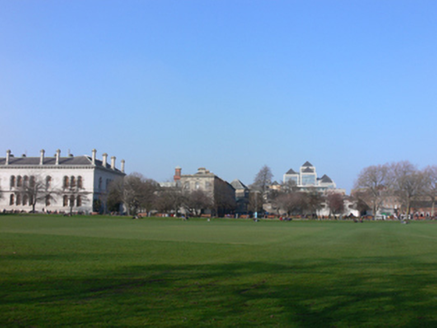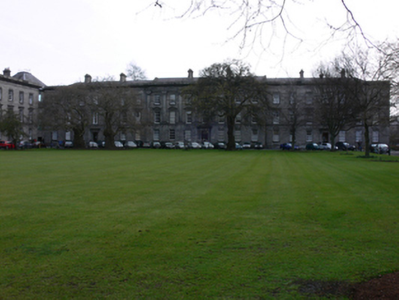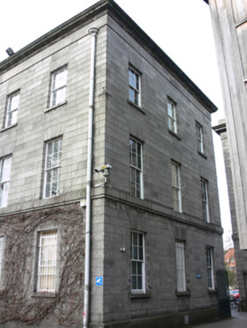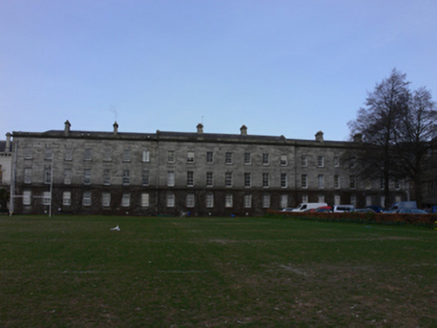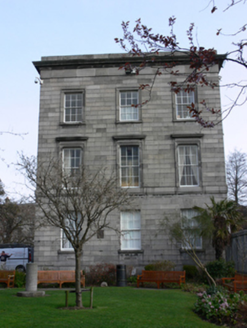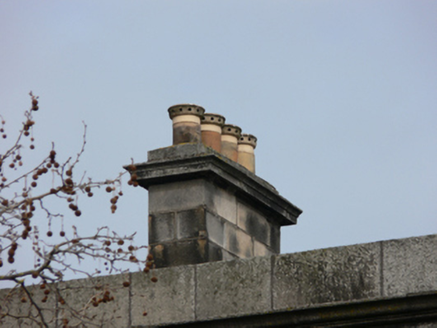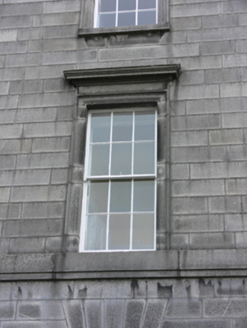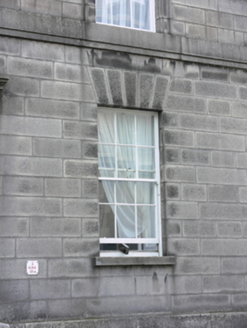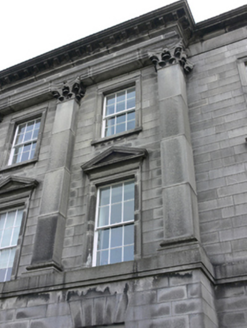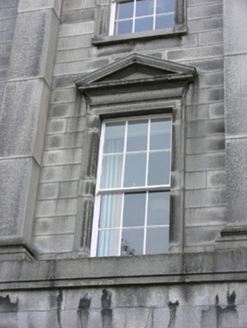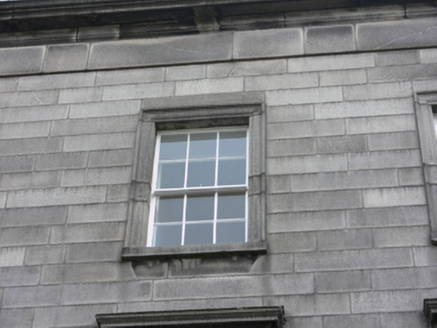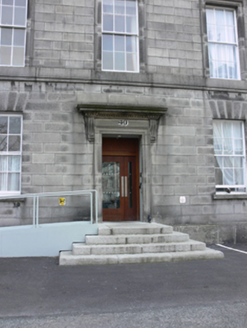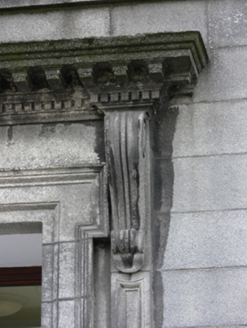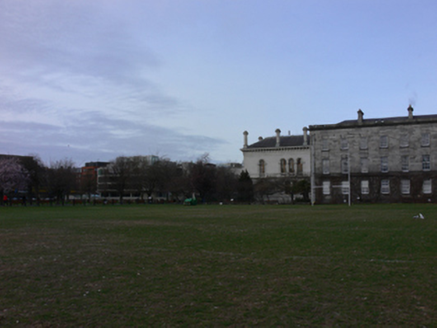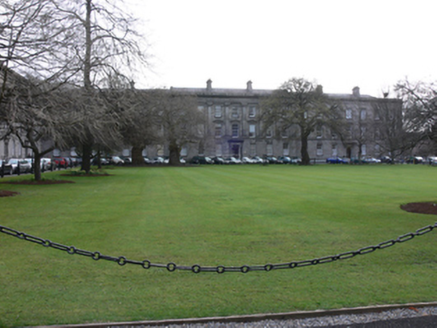Survey Data
Reg No
50020392
Rating
Regional
Categories of Special Interest
Architectural, Artistic, Historical, Social
Original Use
Hall of residence
In Use As
Hall of residence
Date
1835 - 1840
Coordinates
316307, 234065
Date Recorded
27/03/2015
Date Updated
--/--/--
Description
Detached twenty-one-bay three-storey residential hall, built 1836, with shallow seven-bay breakfront. Hipped slate roof, raised pitched roof over breakfront, limestone coping, ashlar granite parapet, ashlar granite chimneystacks, and cast-iron rainwater goods. Ashlar granite to walls, having platband to eaves, plinth course and granite Corinthian pilasters framing bays to upper floors of breakfront. Square-headed window openings with granite sills, architraves, friezes and cornices over first floor windows, pediments to those to breakfront, platband forming continuous sill course to first floor, with wrought-iron bars to ground floor window openings, and having six-over-six pane timber sliding sash windows throughout. Square-headed door openings with carved granite architraves, dentillated cornice on fluted brackets, cast-iron boot scrapes, diminishing granite steps and recent double-leaf doors. Set in grounds of Trinity College, forming east range of New Square with wide views across playing fields to east and garden to south.
Appraisal
New Square was laid out in the 1830s by Frederick Darley, following a competition to design the lecture halls and museum block. Darley’s plans for the latter were never built, and instead these two ranges were designed, framing New Square in a strictly neo-Classical style, which tied it visually to the earlier buildings ranged around Botany Bay and Parliament Square. This unadventurous style has been criticised by some, though it maintains a sense of unity in the college squares. The simplicity of form belies the skill in the execution of the beautiful carved pediments and Corinthian pilasters, and the overall restraint acts as a foil for the Museum Building (50020394) which stands to the south-west, and the classical portico of the Printing House to the north-west (50020390).
